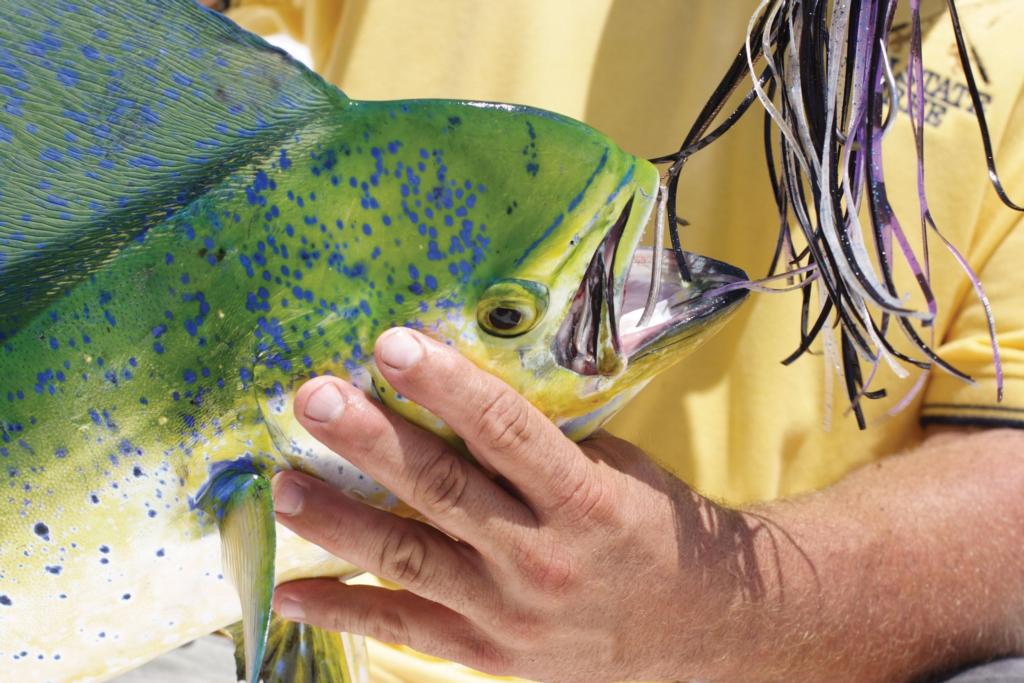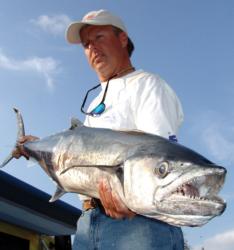Dry Tortugas
Breathtaking scenery and arm-jolting angling

————————————–
Editor’s note: This article originally appeared in the January-February 2006 issue of FLW Outdoors Magazine.
————————————–
February isn’t what some saltwater anglers across the country would call the “hot” month when it comes to fishing. But in one area in the Straits of Florida, October to April is the prime time to come down and boat a bountiful cornucopia of saltwater species. Named the Dry Tortugas by Ponce De Leon for its lack of fresh water and, at the time, abundance of sea turtles, this chain of islands owned by the United States, 70 miles west of Key West, Fla., offers some of the most beautiful, historic and heart-pounding angling action of any saltwater venue during winter and early spring.
Most anglers who vacation in South Florida for a bit of offshore fishing in the Tortugas will likely find themselves in Key West. In fact, Earnest Hemmingway fancied Key West so much that after one visit, he packed up and moved there permanently. At one point, Key West was said to be the wealthiest city in the nation, and majestic homes lining the shores of the island evidence that speculation.
Fans of Hemmingway can patron the same establishment he frequented with his good friend “Sloppy Joe” at Captain Tony’s Saloon. While there is another good destination actually called Sloppy Joe’s, it is believed that Captain Tony’s was the original pub where Joe and Hemmingway shared stories, many of which were said to lead to some of Hemmingway’s books.
If you’re not into the pub scene, then you should step over to Mallory Square in the early evening hours to witness some of the most breathtaking sunsets while listening to performers, live music and shopping in the open-air markets. It’s truly a unique experience, highly regarded by travelers and locals alike.
But the number-one point of interest around Key West is the Dry Tortugas. Dry Tortugas National Park offers great historical tours as well as camping and beach activities on the sands bordering some of the clearest water you’ve ever seen. It’s common to see fish swimming around on the bottom in 50 feet of water. The national park is the only at-sea national park in the country and home to Fort Jefferson, an island penal colony where Dr. Samuel Mudd was sentenced and served his time alone for many years. He was convicted of aiding and conspiring with John Wilkes Booth on the assassination of Abraham Lincoln when he repaired Booth’s broken leg, which broke on the jump from the famed balcony shooting.
And if historic tours and camping don’t tickle your fancy then the surreal experience of scuba diving in  the Dry Tortugas will. Several outfitters can provide you with the necessary equipment. The water is clear and the numerous species of fish, turtles and other sea life will cause your wandering mind to receive a “connection interrupted” with reality.
the Dry Tortugas will. Several outfitters can provide you with the necessary equipment. The water is clear and the numerous species of fish, turtles and other sea life will cause your wandering mind to receive a “connection interrupted” with reality.
The fishing in the Dry Tortugas is more of the same. Five records have come from these islands, including the all-tackle black grouper record of 113 pounds, 6 ounces. It’s not uncommon to run into large schools of dolphin, along with wahoo, kingfish, cobia, jack, grouper, snapper, barracudas and a host of other species that will fall for lightweight fly offerings or heavy-duty live-bait rigs. Several outfitters run charters out of Key West. For your first foray into the unknown, this might be your best bet.
For the adventurous soul who wants to go it on his or her own, be prepared for an hour or more one-way boat ride from Key West to the National Park. There is no gas, food or other amenities on the islands, so take what you need to get there and back. Take a variety of baits and rigs with you, as you never know what you’re liable to run into out there. For most anglers, the thrill of a topwater bite in the Dry Tortugas is unmatched. Anglers commonly hook 200-plus-pound jewfish on fly rods. Think that’s crazy? Then seeing a 30-pound grouper shoot off the corral reef bottom in 12 feet of water and cartwheel end over end, slapping himself silly with the topwater bait that’s hooked in the side of his mouth, will really send your blood pumper into jumbled rhythms.
Topwater action reaches the summit of fishing excitement here. Jolting concussions interrupt melodic cadences of whispering gallops across the surface. These metaphors multiply in the confines of greenish-blue backdrops and shadows of darting predators when you talk about topwater fishing in the Dry Tortugas. It’s as close to “shooting fish in a barrel” as the average angler will ever come.
The history of Fort Jefferson
After the War of 1812, a set of forts stretching from Maine to Texas was planned to protect the United States from foreign attacks. Fort Jefferson was to be the grandest of all the forts. In 1845, the islands of the Dry Tortugas became a military reservation, so the construction of the fort could begin. The fort walls were not complete until 1862, and it was named in honor of Thomas Jefferson.
Construction on the fort dragged on for more than 30 years and construction ended before completion. Weather, funding, and difficulties in transporting supplies and laborers to such a remote location made the endeavor too much to bear. Then came the invention of the rifled cannon during the Civil War that exposed vulnerabilities in the walls, making the fort obsolete.
During the Civil War, the fort was used as a prison for deserters and other criminals. In 1874, the army gave up on the fort because of hurricanes and plagues of yellow fever. It wasn’t until 1898 that the Navy reopened the fort to use it during the Spanish-American War. The fort was again used during World War I.
The islands were designated a bird reserve and transferred to the Department of Agriculture in 1908. President Franklin Roosevelt selected it as the Fort Jefferson National Monument on Jan. 4, 1935 – the first marine area to receive that designation. The monument was upgraded to national park status in a bill signed by President George Bush in 1992.